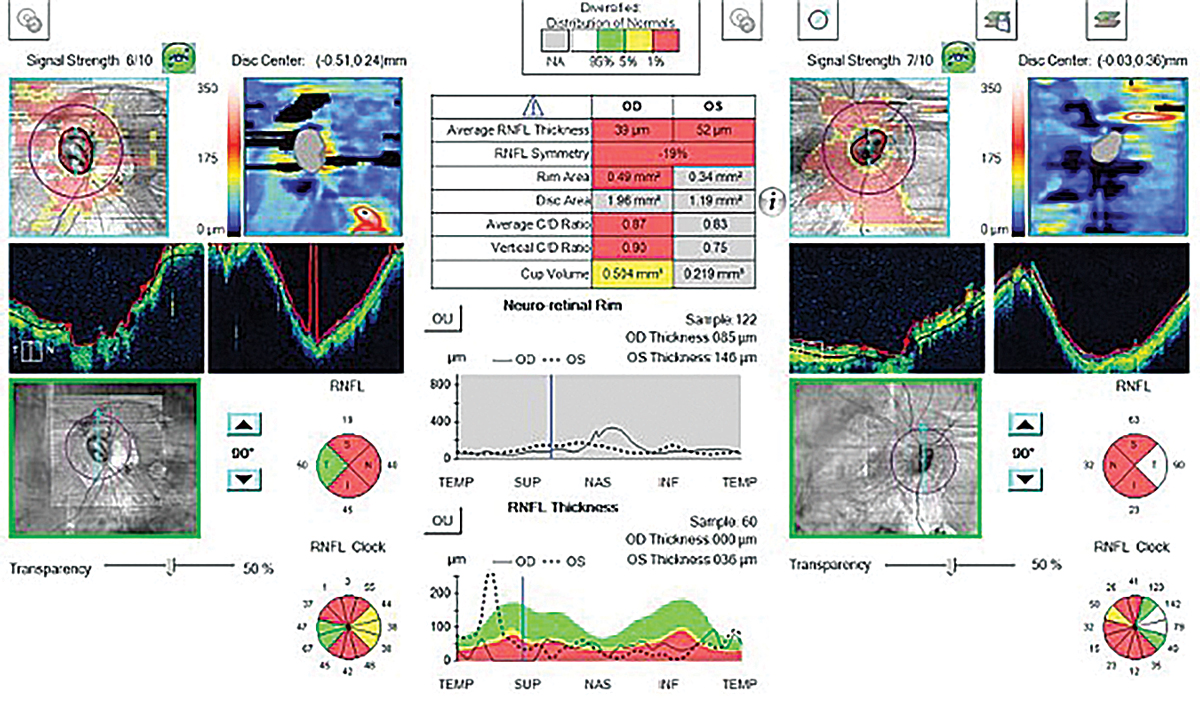 |
Conventional OCT metrics may yield false positives (so-called red disease) in high myopes. Photo: Andrew Rouse, OD. Click image to enlarge. |
Patients with high myopia may be misdiagnosed as having glaucoma due to the irregular appearance of the fundus. To further investigate possible misdiagnosis, researchers recently compared the diagnostic ability of both the regular and long axial length databases of an SD-OCT device in patients with high myopia. They found that using the long axial length database may reduce the number of misdiagnoses.
The cross-sectional observational study involved patients with high myopia (axial length ≥26mm). Glaucoma diagnosis was based on glaucomatous discs, visual field defects and corresponding RNFL defects. The researchers reported that the specificity and diagnostic accuracy of macular ganglion cell complex (mGCC) thickness was significantly higher when using the long axial length database. They also noted significant proportion changes in superior/inferior mapping (37.3%) and sectoral mapping (48%) from abnormal to normal with the long axial length database.
Given the increased specificity, clinicians could use a database of high myopes, if available, “to effectively decrease the number of false-positive diagnoses or to correctly identify highly myopic normal eyes misdiagnosed as glaucomatous eyes,” they wrote in their paper. “The mGCC thickness of highly myopic eyes has significantly improved specificity in differentiating normal, highly myopic eyes from glaucomatous eyes when using the long axial length database.” The researchers hope the encouraging results will “strengthen the use of a long axial length normative database in other OCT instruments, thus providing a more accurate diagnosis of glaucoma in highly myopic eyes.”
Chen HS, Ling X, Lu D, et al. Glaucoma diagnostic performance of macular ganglion cell complex thickness using regular and long axial length normative databases. Sci Rep. 2022;12(1):11263. |

